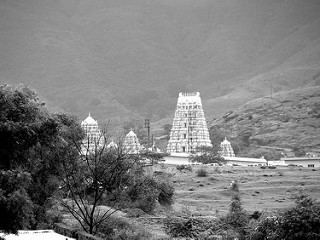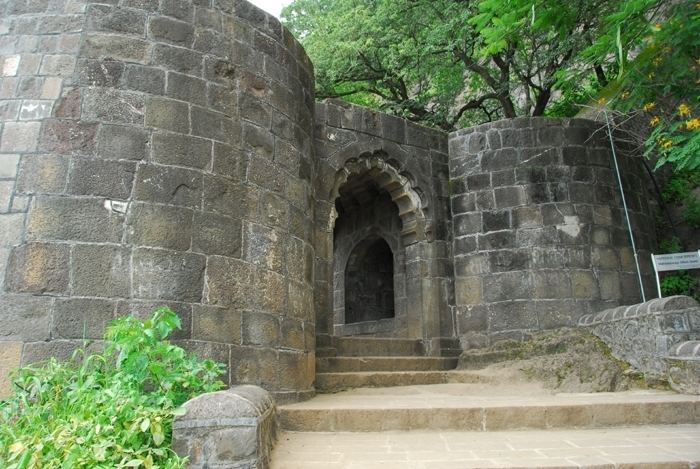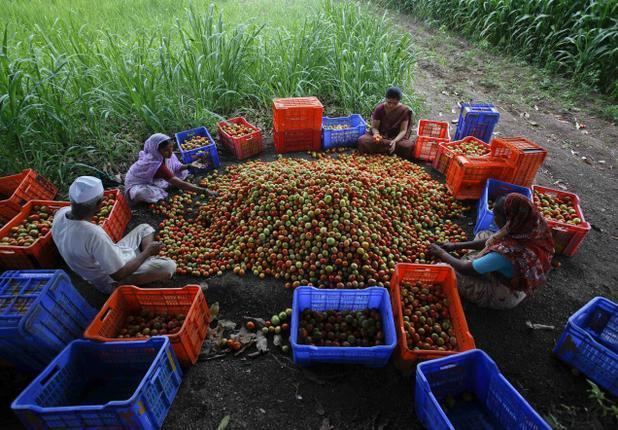Country State | Language spoken District | |
 | ||
Map of Narayangaon
Narayangaon is a town in the Pune district of Maharashtra state, India.
Contents
- Map of Narayangaon
- Narayangaon junnar people working harder to keep tamasha alive
- Goat farming at narayangaon
- Geography
- Historic importance
- Tourism
- Forts
- Temples
- Farming
- Tomato market
- Proximity to dams
- Science
- Narayangaon yatraotsav
- References

Narayangaon is one of the most important towns in Pune District. Water is abundant because of its proximity to the major dams, the western ghats, and the Sahyadri mountain range.

Narayangaon junnar people working harder to keep tamasha alive
Goat farming at narayangaon
Geography
Narayangaon is located 656 m (2,152 ft) above sea level on the western margin of the Deccan plateau. It is situated on the leeward side of the Sahyadri mountain range, which forms a barrier from the Arabian sea. Narayangaon is on the bank of the river Meena. A wide hill range in the south separates the town from the adjoining Ambegaon taluka.
Narayangaon can be reached from major cities via road. It is situated on Pune-Nasik National Highway 50. It is 77 km north of Pune, 132 km south of Nasik and around 176 km east of the state capital, Mumbai.
Historic importance
Shivneri Fort, the birthplace of Chhatrapati Shri Shivaji Maharaj, who founded and ruled the Maratha empire during the 17th century, is 16 km away from Narayangaon. Two of the Ashtavinayak Ganapatis, Lyanadri and Ozar, are located nearby. Historical Nane ghat is a place from where trading to the Mumbai market was being done since around 8th century. It is around 35 km west of Narayangaon. Lenyadri, Manmodi, Tulja, Shivneri are the caves in nearby areas which have existed since the Buddhist era.
Tourism
Junnar taluka is noted for the presence of 27 leopards in a 500sq m area. The leopard rehabilitation center in Manikdoh, around 25 km west of Narayangaon, is becoming a tourist attraction ever since its establishment. Malshej Ghat, a tourist destination in the western ghats, is a 45-minute drive away.
A number of commercials and films have used Narayangaon as a backdrop. Visitors explore the architectures of medieval periods such as Adilshahi in nearby places. Caves, dams in nearby areas can also be explored by tourists.
Forts
The Maratha Emperor Shivaji Maharaj was born at Shivneri Fort, 16 km west of Narayangaon. Shivneri fort is one of the most noted historic places in Maharashtra (India).
The Narayangad fort is about 8 km north-east of Narayangaon, and is believed to be the origin of the town's name.
Ganpirya, Chawnd, Nimgiri, Dhakoba, Hadsar, Jivdhan, Harishchandra are other important forts nearby, some of which have become great attractions for trekking. Nature lovers can visit these forts for the natural environment and the rare species of plants found nearby.
Temples
Goddess 'Muktabai' (Muktaai) (मुक्ताबाईमुक्ताई) is the Gram-Daivat (root deity) of Narayangaon. Muktabai Temple is situated on the bank of Meena river. It has recently undergone major renovation.
The yatra of Goddess Muktaai starts after the day of 'Varuthini, Ekadashi. This is one of the biggest yatra in Maharashtra state. People come from different parts of the state to enjoy this festival.
Lord Ram temple was established in the era of Peshwas. It is situated at the centre of town. The temple was given to the Brahman Sangh in the 1990s. It was later renovated. The festival of Ramnavami is celebrated every year in the temple.
Hanuman temple is one of the oldest in town.
Shambhu Mahadev temple is a branch of Shikhar Shingnapur Mahadev temple.
Two of the Ashtavinayak Ganapatis are located nearby:
Also a Lord Shiva temple named 'Kapardikeshwar' is in Otur, 15 km north to the Narayangaon. Lord Khandoba temple is situated near Wadaj, 12 km west from the town.
Farming
As the town is surrounded by dams and the western ghats, and Shyadri mountain range is in its proximity, water is abundant in Narayangaon and surrounding places. Farming is a major income source here, and mainly includes vegetables and sugar canes. In the last few years, farmers here are also trying for other sources of income. Narayangaon has emerged as a major export place of table grapes. Grapes from here are exported mainly to the Middle East and Europe.
Tomato market
In any market where agricultural produce is sold through commission agents, the farmer does not know the price at which a deal happens between the agent and the trader. He has to believe what the agent tells him and be happy with whatever pittance he gets paid a month later. But at the Narayangaon market, the trader or his representative comes to the farmer and quotes a price. No middlemen involved and the deal is struck. The farmer gets his money right on the spot.
The turnover of the tomato market has increased from Rs 3 crore in 2004 to more than Rs 150 crore in 2013. 600-700 farmer groups of 20 people who work on supply of tomatoes to Pune, Ahmednagar, Thane and Raigad. Around 200 truckloads of tomatoes also go to the North every day. Due to its specific climatic conditions, Narayangaon supplies more than 60% of tomatoes consumed in the country during the four months of the rainy season.
Proximity to dams
Narayangaon is close to the five major dams. The nearest is Yedgaon Dam on the Kukadi river, about 9 km to the north. Wadaj Dam on the river Meena is 16 km to the west. Pimpalgaon Joge Dam on Pushpavati is 30 km to the northwest, and Manikdoh Dam on the river Kukadi, is 25 km to the northwest. Chilewadi Dam on the river Mandvi, is 25 km to the north.
Science
The Giant Metrewave Radio Telescope is located 9 km to the east. It is the world's largest array of radio telescopes at metre wavelengths. It is operated by the National Centre for Radio Astrophysics, a part of the Tata Institute of Fundamental Research, Mumbai.
VSNL's (Videsh Sanchar Nigam Ltd.) major project is located at Arvi, 5 km away from the town.
Narayangaon yatraotsav
Narayangaon is considered to be the Pandharpur for the performing folk art tamasha. Narayangao yatraotsav (Narayangao fair) is the largest trade fair dedicated to it. Troupes from all over Maharashtra congregate to the fare during which performances are booked by patrons by payment of advances.
